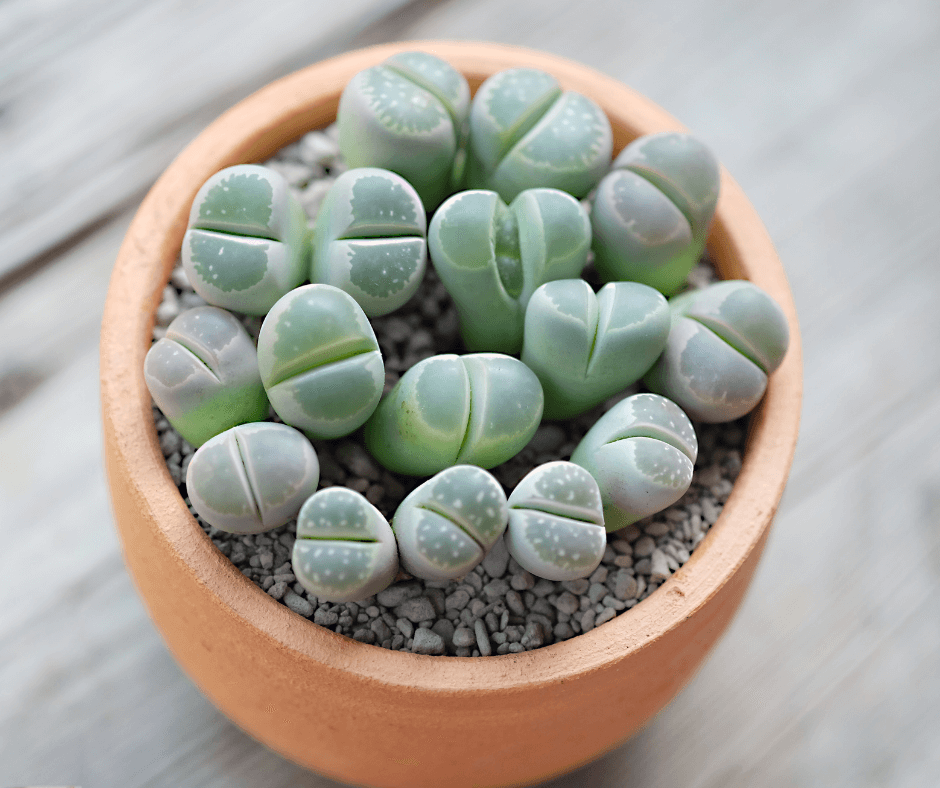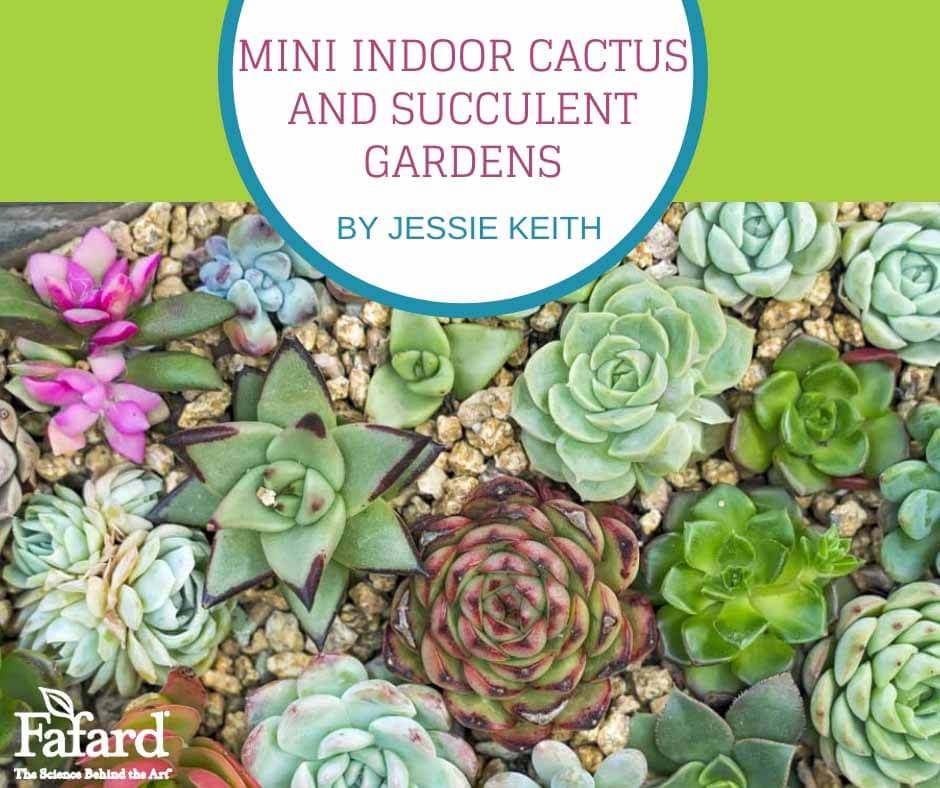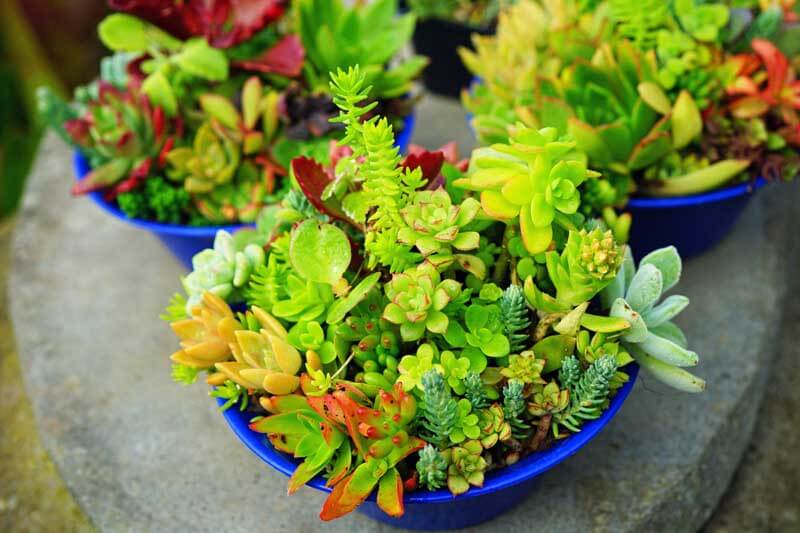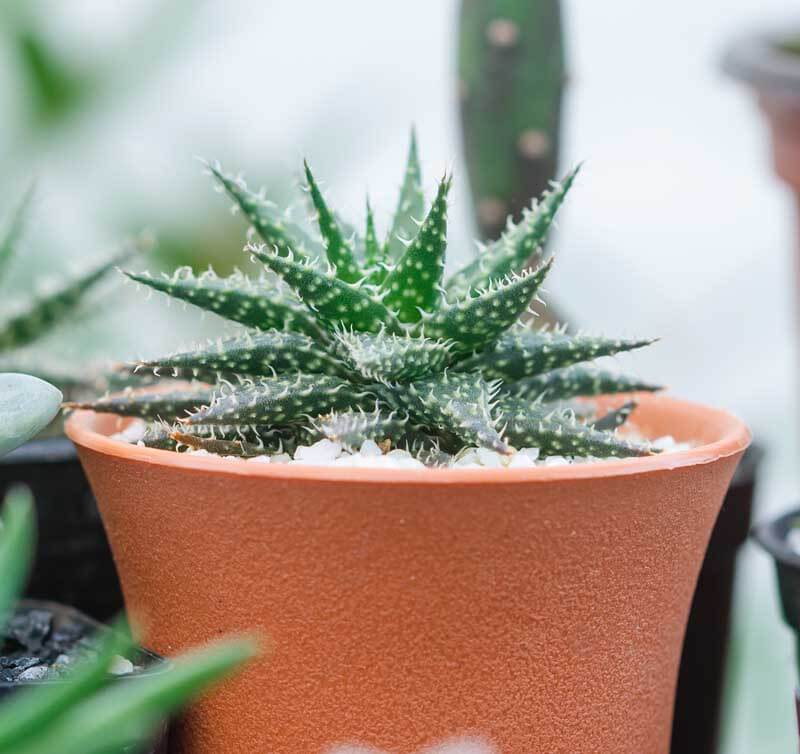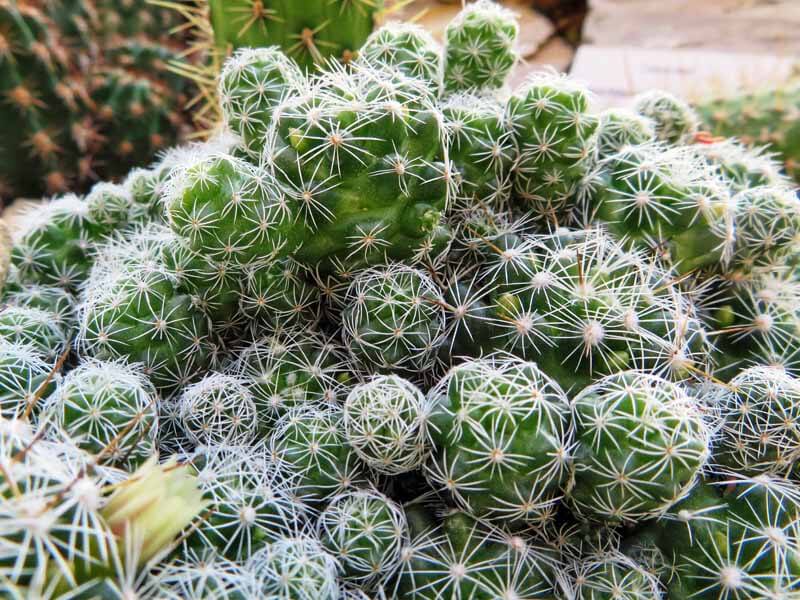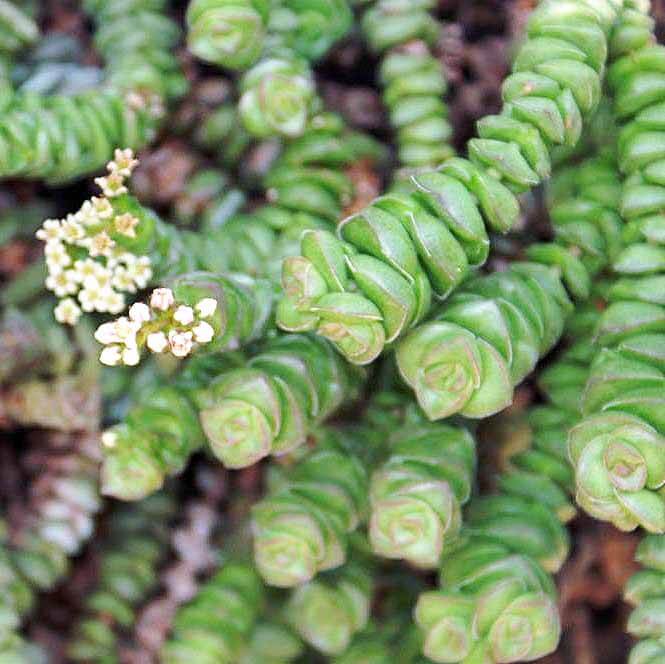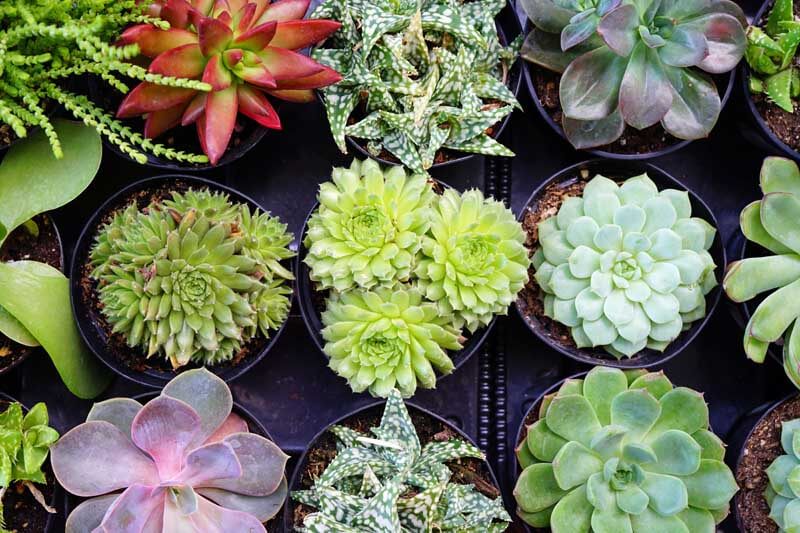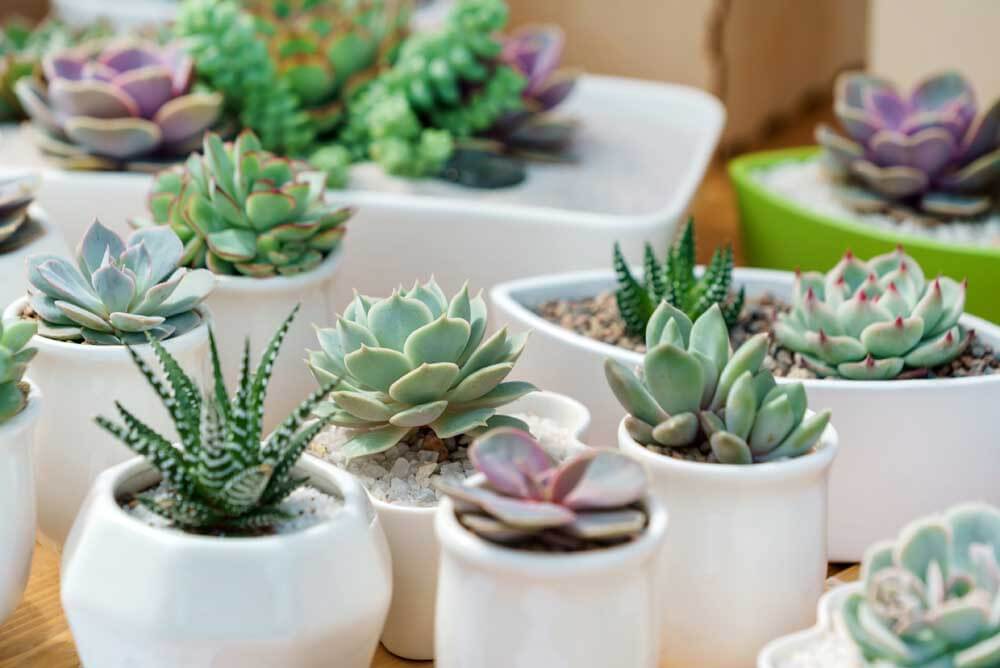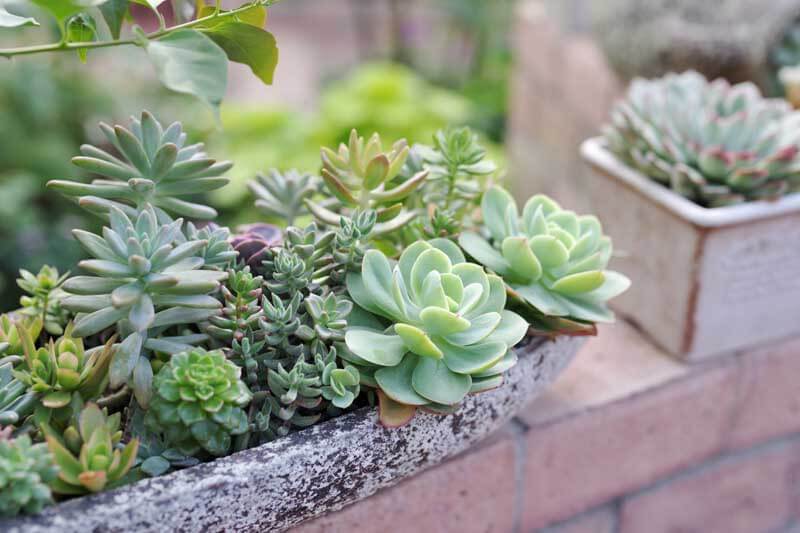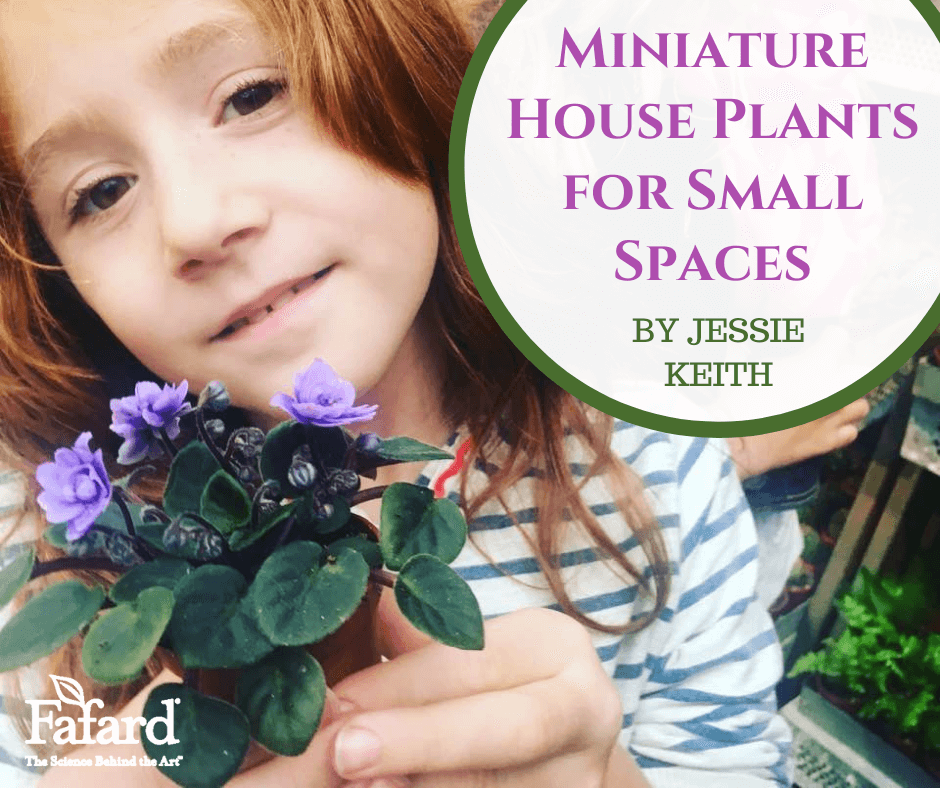
Some apartment dwellers, or those with small homes, may relish the idea of filling living spaces with big, clambering house plants for a jungle-like look, but others can take a subtler approach with space-saving miniature plants. They demand less care and provide more elbow room while keeping the water bills low.
A sunny tabletop can hold several small plants rather than one large specimen and still have a place for magazines and a cup of coffee. Our favorites look like popular big house plants, only miniature or micro-miniature, and all are full-on cute.
(One important caveat when choosing mini-plants: Don’t be fooled by small-looking plants sold in tiny pots. Lots of plants sold in tiny pots will grow quickly and eventually become large. Always look at the final height and width of a plant on the tag before purchasing it.)
Miniature Flowering House Plants
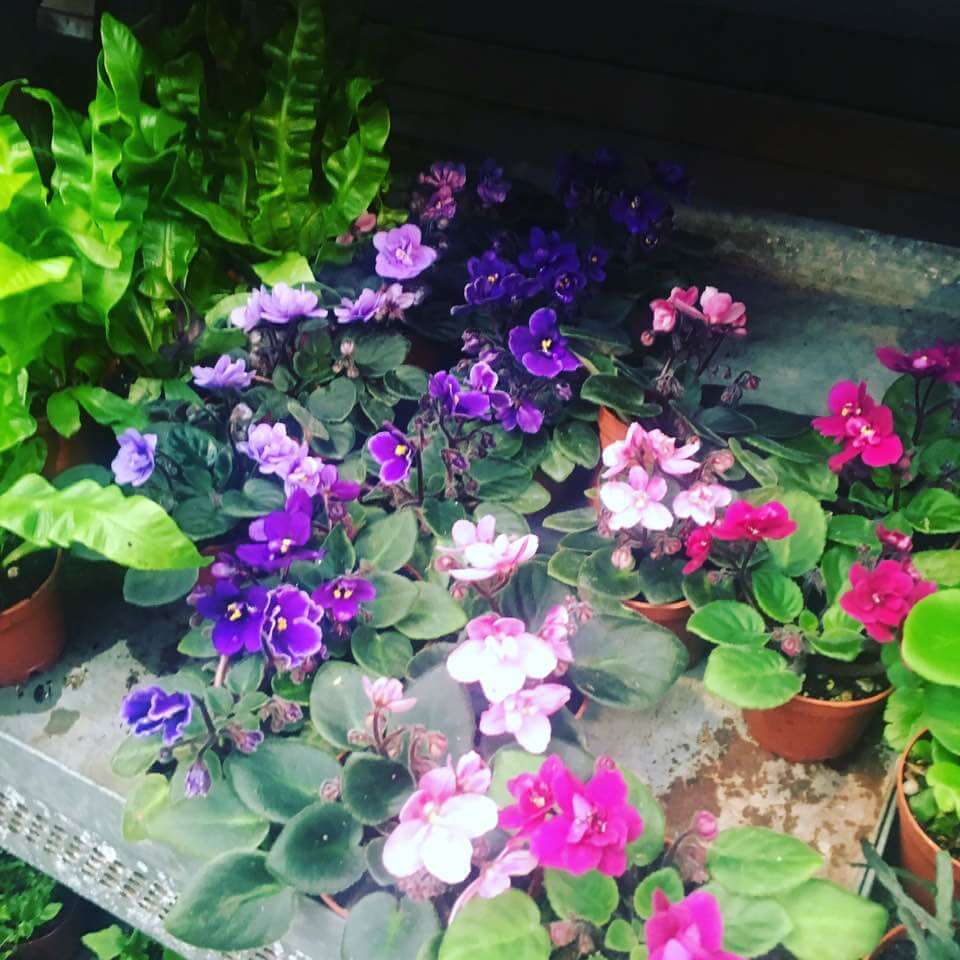
There is no shortage of microminiature (maximum of 3″) and miniature (maximum of 6″) African Violets (Saintpaulia hybrids). Their tiny clusters of blooms come in all colors, and the little plants grow just like larger varieties. (Click here to learn more about mini African Violet care.)
Miniature Golden Begonia (Begonia prismatocarpa): This is one of many tiny begonias. The little begonia reaches 5-6 inches and originates from the forests of western Africa. Its small habit, bright green leaves, and little golden-orange flowers are truly beautiful.

Miniature Cape Primroses (Streptocarpus hybrids): Big, colorful tubular flowers in shades of white, pink, purple, and lavender appear on little plants periodically throughout the year, particularly from fall to summer. Water from the base of the pot, as you would an African violet, and place it in bright, indirect light. Be sure to keep the foliage dry.
Miniature Wax Plant (Hoya lanceolata subsp. bella): When compared to most vining hoya, which reach several feet in length, 12-18 inches is quite small. This lovely wax plant develops clusters of pink-centered white flowers with fantastic fragrance. It makes a perfect hanging basket specimen for a partially sunny spot.

Lightning Bolt Jewel Orchid (Macodes petola) is an outstanding small foliage plant from the forests of Indonesia. Its leaves look as if riddled with nerves or lightening bolts. Ten-to-fourteen-inch spires of white or pinkish-orange flowers rise from the stems yearly, but the foliage stays low and compact–usually to 6 inches. Plant it in loose sphagnum peat moss and water with distilled, room temperature water to keep it moist. Bright, indirect light is preferred.
Miniature Foliage House Plants

Miniature aloe (Aloe ‘Pepe’) maxing out at 3 inches, this little aloe is as tiny and cute as can be. Plant it in tiny pot alongside tiny cacti and succulents or in a mini terrarium. (Click here for a more expansive list of mini succulents.)
Easter lily sea urchin cactus (Echinopsis subdenudatum ‘Dominos’) reaches 3-4 inches Easter lily sea urchin cactus and is spectacular in bloom. The non-prickly little cactus ‘urchins’ has sparse tufts of white spines. In spring or summer, is bears huge, 6-8-inch-long, white, tubular flowers are produced that are fragrant and night-blooming. (In the wild, bats and moths pollinate them.)
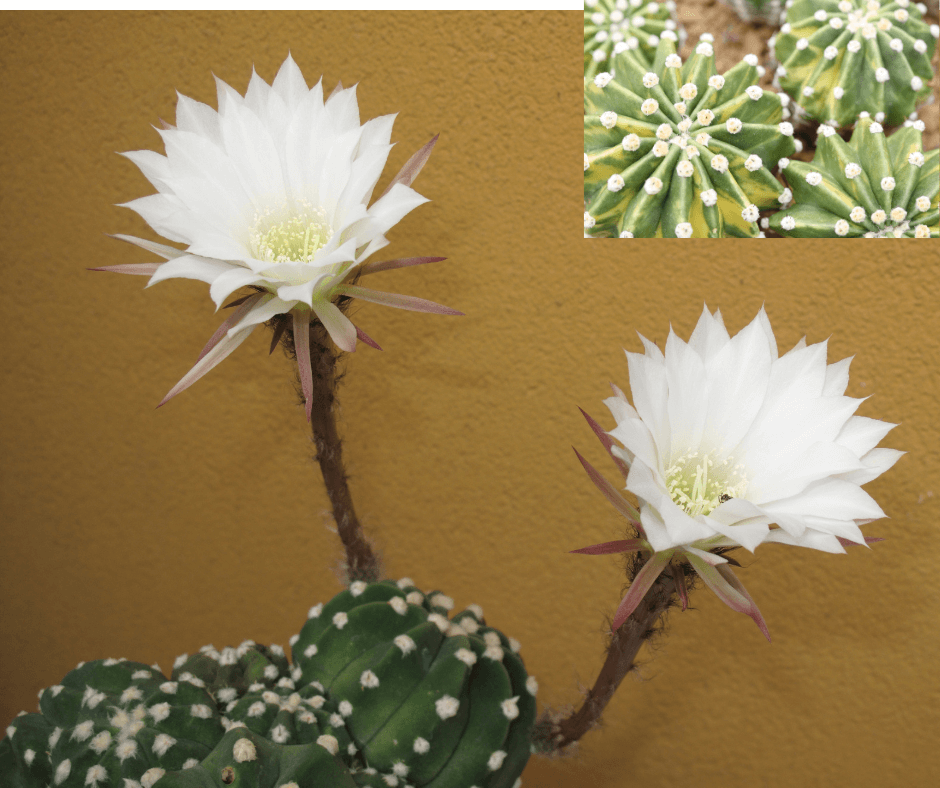
Baby rubber plant (Peperomia obtusifolia) and Ruby Glow Peperomia (Peperomia graveolens ‘Ruby Glow’) are two compact, succulent peperomias that are very easy to grow and attractive. The 6-inch Ruby Glow has curved, succulent leaves with attractive red undersides. Baby rubber plant looks much like the large rubber plant (Ficus elastica), but it is tiny in comparison maxing out at around 12 inches rather than many feet. Be sure to provide them pots with drainage holes and porous, high-quality soil such as Fafard Professional Potting Mix. Allow the pots to become moderately dry between watering.
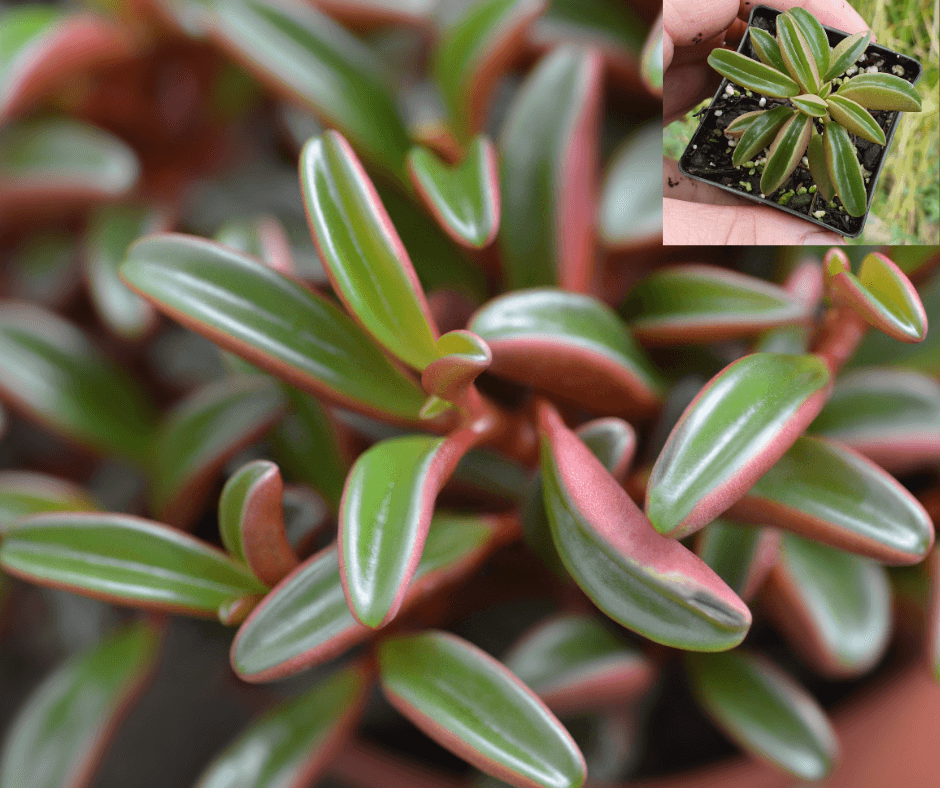
Most living stones (Lithops spp.) are so small that they stay under 1-inch in diameter. Others grow a bit larger, reaching 3 inches maximum. They form little clumps of pebble-like plants. Mature plants will flower, producing one starry yellow, pink, or white flower per stone, depending on the species. The plants themselves can be grey, blue-green, green, brown, and even reddish and orange hues. Some are even have textural markings across the top like real stones. Give these true desert plants the sharpest draining pots, and plant them in pebbly soil. The top 1 inch of medium should just be fine gravel. Water sparingly and keep in partial to bright, indirect sunlight.
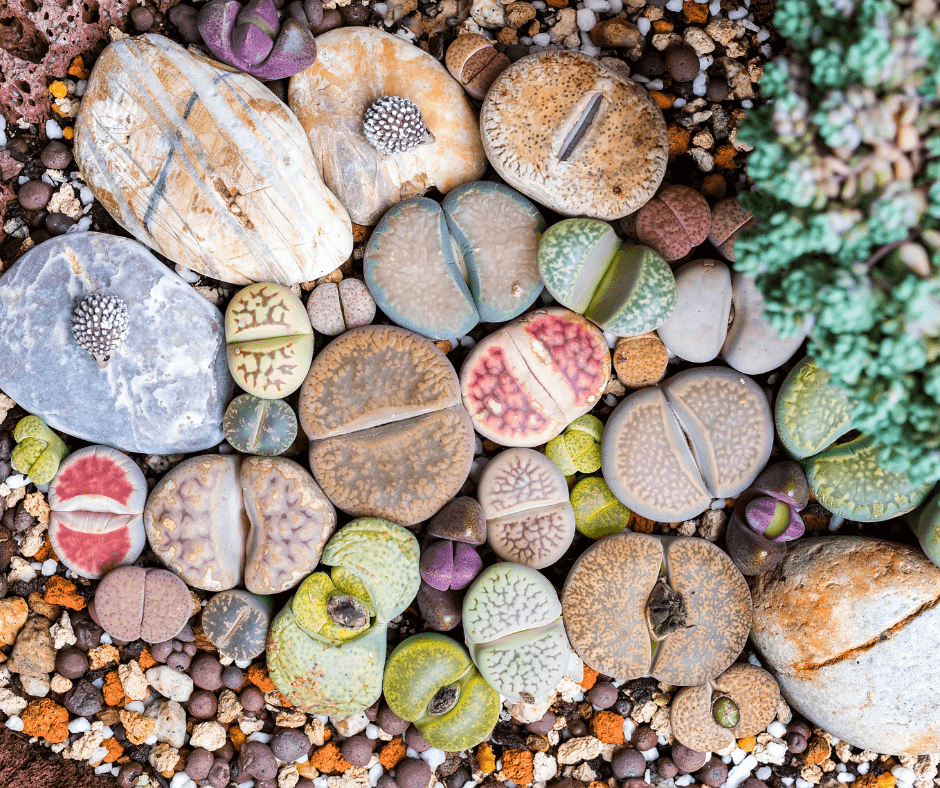
Bold serrated leaves make Philodendron ‘Little Hope’ look like big varieties, but it stays comparatively small at 1-2′. Indirect light and regular moisture are recommended for this rain forest plant.
Any one of these little house plants would light up a small space in your home. And, small means that you can have more, so choose them all.
